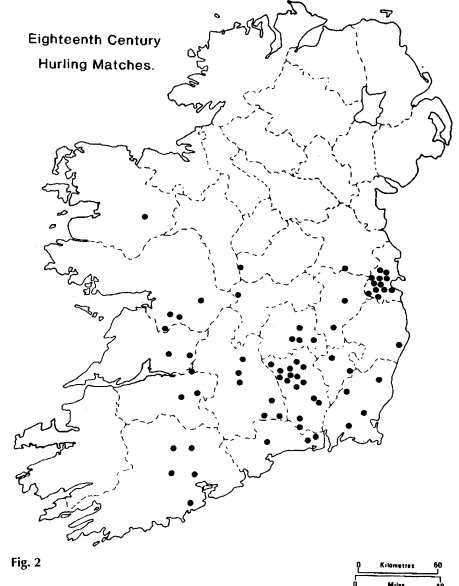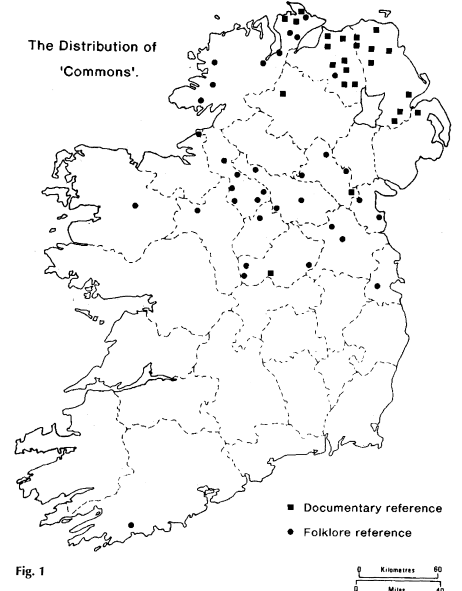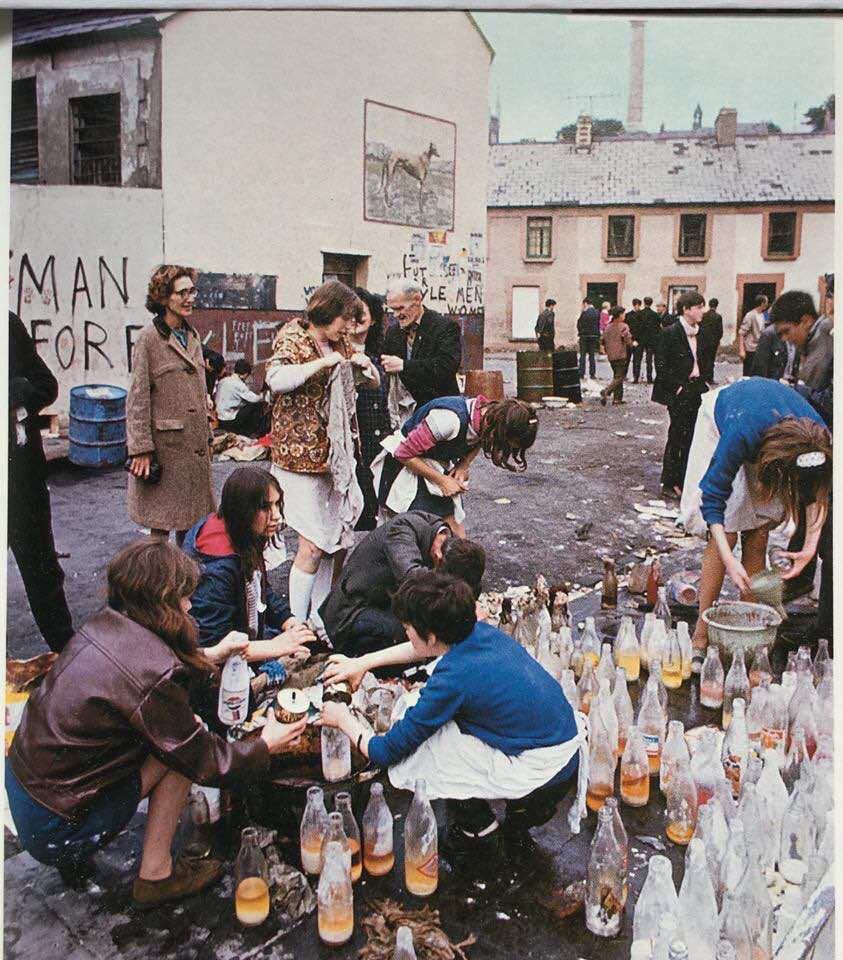I guess this is what they call an effortpost. Everybody knows that hurling is played basically here:

'Hurling' as we now now it is not Ireland's sport, it's Clare+Limerick+Kilkenny+Cork+Waterford+Tipperary+Galway's sport and we just humour the rest of ye. (Offaly are up-and-comers in fairness to them.)
You have heard that hurling has been played here for thousands of years, before the coming of the Celt, and that is true, not an empty boast. This is known by sliotair and camáin found in archæological sites.
I'm gonna make the controversial claim that sport was invented in the 19th century. Obviously there were athletic contests long before that, but modern sports with rules, time limits, referees: there was a craze to codify sports in the 19th century, with the Football Association founded on the other island, things happening at the Rugby and Eton schools, the Melbourne Football Club publishing the first laws of Australian football in May 1859, etc.
Irish nationalists were aware of all this 'codification' and got on board. In 1885, Michael Cusack and Maurice Davin agreed on the rules of hurling. (Note that it was them two: this will be significant later on.) The game played by the GAA now is NOT the whole story of historical hurling on this island; it's Cusack & Davin's interpretation of it. In the 19th century there were competing rulesets, like 1869's Killimor Daly rules of south Galway, and the rules drafted by James Maher of Tipperary in pre-famine years (see the book 'The Hurlers' by Paul Rouse). My point is: there's a difference between the millenia-old tradition of poccing balls around, and the 150-year-old code.
Before the 19th century, though the sport was uncodified (all sports all over the world were uncodified before the 19th century), there were recognisably two versions. Here is the geography of documented hurling matches from the 1700s:

(Images are from Kevin Whelan's The Geography of Hurling, which says most but not all of what I'm saying here.) You'll immediately see that this is contiguous with the hurling strongholds of 2024.
But there was another version called camán, and here's where sources show that being played:

"Camán, anglicised as commons, is described as being akin to field hockey or shinty, a winter game played with a narrow stick and a wooden ball that could not be handled. Iomán was a summer game, played with a flat, round-headed stick and the ball could be handled."
What I'm saying is that what we now call hurling/iomán is only part of historical hurling. It's not 'hurling'; it's just 'GAA rules hurling'. There is also another game traditionally played north of the M4/M6 motorway.
Now note that when traditional hurling was codified, it was codified by Cusack and Davin: hurling was codified by a Clare man and a Tipp man! Is it any wonder that they created a sport that has strongholds in that part of the world? If Michael Cusack had been from Donegal, we'd play a different game.
The good news is that camán is still alive. It's kept alive by the Scots in the form of shinty/camanachd. They have their website https://shinty.com and their youtube channel. I'm arguing that shinty is NOT Scottish but rather Gaelic, with a historical geography that stretches across the Northern channel. Cú Chulainn, being an Ulsterman, maybe played shinty rather than GAA-rules
Thanks for reading, happy hurling.




